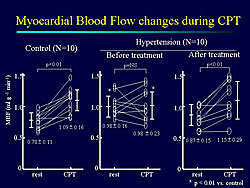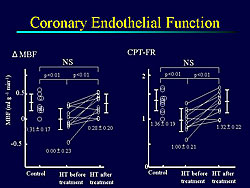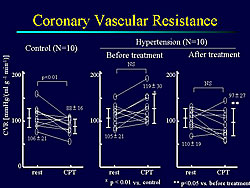Recent Advances in Intravascular Imaging Techniques
Shigeho Takarada
Wakayama Medical University
Wakayama, Japan
Intravascular ultrasound (IVUS) is useful for evaluating the pathophysiology of atherosclerotic plaques in blood vessel walls. However, this method has limitations for assessing some tissue components in plaques. Dr. Shigeho Takarada, Wakayama Medical University, described studies of a new intravascular imaging technique, called optical coherence tomography (OCT), that might provide improved imaging of vulnerable plaques.
OCT is a new intravascular imaging method with a high resolution of 10 to 20 µm, which is 10-fold higher than the resolution of IVUS. OCT images show that fibrous plaques are signal rich and homogeneous with low attenuation, calcified plaques are signal poor and well-delineated with sharp borders, and lipid-rich plaques are signal-poor with diffuse borders.
While sensitivity of IVUS and OCT for diagnosing fibrous and fibrocalcific plaques is similar, sensitivity for lipid plaques is significantly higher with OCT (85%) than IVUS (59%) (p <0.05). OCT also has good correlation with histology for measuring thickness of fibrous caps. In a study of OCT to differentiate between red and white thrombi, peak intensity was similar for both types, but the intensity half distance was significantly higher for the white thrombus (324 ± 50) than the red thrombus (183 ± 42) (p=0.0001). OCT also allows quantification of macrophages in plaques.
Dr. Takarada’s group used an intra-coronary thermometer to identify areas in plaques with high numbers of macrophages. In a case study of a 64-year old female with unstable angina, use of the intra-coronary thermometer showed an 0.18°C difference in temperature between normal artery and the stenotic site. This technique was used to evaluate 34 lesions in 23 patients (14 males, 9 females) with stable effort angina and nine patients (7 males, 2 females) with unstable angina. Temperature of the intra-coronary artery was measured using an intra-coronary thermometer with a pressure guide wire, directional coronary atherectomy was performed, and the lesions were examined histologically with hematoxylin-eosin (H&E) stain, CD-68 for macrophages, and CD-45 for T cells.
Patients with unstable angina had significantly higher plaque temperatures (0.29 ± 0.16) than patients with stable angina (0.13 ± 0.10) (p=0.001). Patients whose plaques had high numbers of macrophages had higher temperatures (0.34 ± 0.15) than those whose plaques had low numbers of macrophages (0.11 ± 0.07) (p =0.0015).
Takarada concluded that recent advances in intravascular techniques, OCT, and temperature evaluation may enable identification of vulnerable plaques, including lipid-rich plaques, thin fibrous caps, thrombi, and high-macrophage plaques. |


